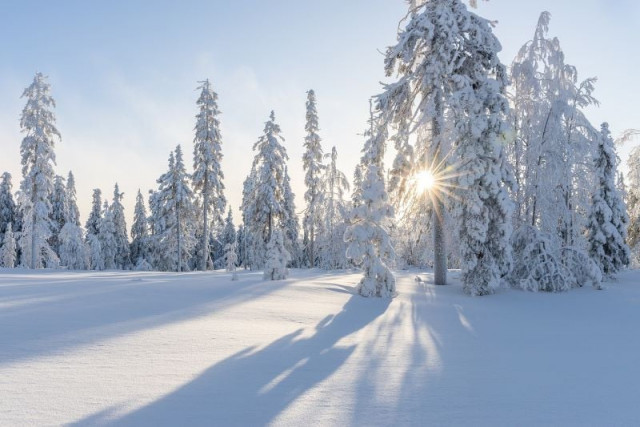La Nina winter predicted to influence temperatures, snowfall across US
A weak La Niña is expected to develop before winter, affecting temperatures, potentially snow across the United States

Autumn may be in full swing, but attention is already turning to winter, which could be quite different from last year's El Niño-dominated season.
A weak La Niña is expected to develop before winter, affecting temperatures, precipitation, and potentially snow across the United States. La Niña, a natural climate phenomenon, is defined by cooler-than-average ocean temperatures in the equatorial Pacific. It has the most impact on winter weather in the Northern Hemisphere, with much less influence during summer.
Last winter, the Lower 48 experienced record warmth, largely due to El Niño and the broader impacts of climate change. This prolonged warmth led to fewer snowstorms in the Northeast and Midwest, resulting in a notable snow drought.
The annual US winter outlook report predicts that La Niña conditions are strongly expected throughout the country. The US has a 74% chance of La Niña conditions, while there is a 40% chance of this being a moderate event. NOAA also predicted the changes in La Niña effect on USA.
La Niña events are the periodic cooling of ocean surface temperatures in the central and east-central equatorial Pacific, according to the National Weather Service. This period usually happens every 3 to 5 years but can also pop up on occasion. Last year, the US dealt with El Niño conditions, which are the opposite of La Niña, meaning the ocean warms to above-average sea surface temperatures in the central and eastern Pacific Ocean.
The Climate Prediction Center gives a 60% chance that La Niña will emerge by November, and if it does, it’s expected to last through the winter and into early spring. However, La Niña or El Niño are not the only factors influencing seasonal weather, though they often have a strong effect, especially when powerful.
Forecasts currently suggest La Niña will remain weak this season. "A weaker event makes it more likely that other weather and climate phenomena could play the role of spoiler," said Emily Becker, an atmospheric scientist at the University of Miami, writing in NOAA’s La Niña/El Niño blog.
The Climate Prediction Center will release an updated forecast on Thursday, which could reflect shifts towards a weaker La Niña. Early predictions show many of the typical La Niña winter characteristics, including changes to the jet stream, which often moves storms away from the South and into the northern US. This is in line with the Center’s latest outlook for December to February.



















COMMENTS
Comments are moderated and generally will be posted if they are on-topic and not abusive.
For more information, please see our Comments FAQ